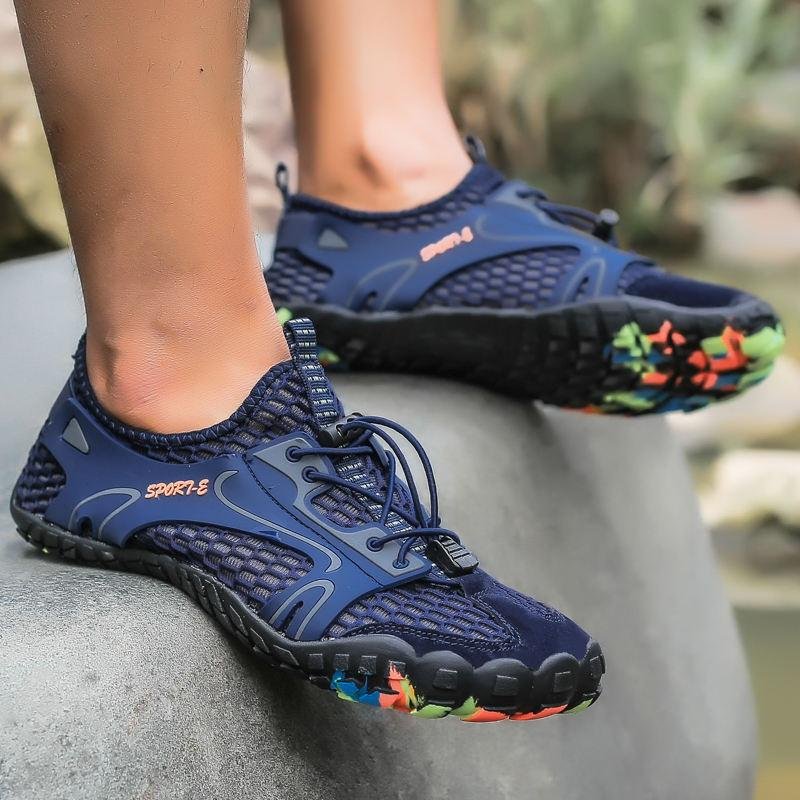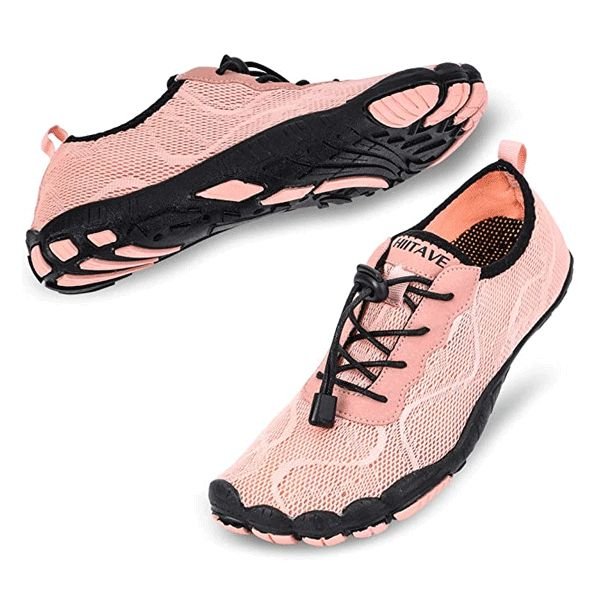As an avid kayaker, having the right footwear is essential for comfort and safety.
Your shoes need to grip the boat deck, drain water quickly, and protect your feet from impact.
But with so many options available, how do you know what shoes work best for kayaking?
In this article, we’ll cover everything you need to consider when shopping for kayak shoes womens or men’s styles.
I’ll also share my top picks to keep your feet happy and dry during paddling adventures.
Traction is Key
One of the most important features of kayak shoes is traction. The soles need to grip the smooth, wet surface of your boat deck to avoid slips and falls.
Look for deep tread patterns and soft rubber compounds that cling to surfaces. Some key elements to consider:
- Lug depths of at least 5mm provide better traction. Deeper lugs channel water away more effectively too.
- Sticky rubber, like Vibram soles, offer excellent wet/dry traction.
- Soles with an aggressive tread dig into boat decks. Herringbone and multi-directional patterns work best.
I highly recommend prioritizing traction over all other features when shopping for kayak shoes.
Nothing ruins a paddling trip faster than taking an unexpected swim because your shoes couldn’t grip the deck!

Drainage Keeps Feet Dry
Even with great traction, your shoes are bound to get wet.
Quick drainage is crucial to keep your feet comfortable and avoid blisters from soggy shoes.
Here are key drainage features:
- Mesh panels or perforations allow water to flow out of shoes. Upper drainage systems are ideal.
- Open-cell midsoles absorb less water than dense foam. EVA foam or drop-in footbeds with ports offer the best drainage.
- Some models have drain holes in the sole to let water exit faster. Small ports don’t compromise traction.
No matter how well-drained your shoes are, your feet will get wet in a capsize. Having a spare pair of socks onboard helps for a quick change.
Cushioning Reduces Fatigue
Long hours of paddling can take a toll on your feet. Cushioning helps absorb impact and reduces foot fatigue.
- EVA and EVA/rubber hybrid soles offer excellent shock absorption. Compression-molded EVA soles are best.
- Some shoes include an internal shank for arch support and stability. Shanks made of composite materials are lightweight.
- Removable insoles let you insert custom orthotics for superior comfort. Many kayak shoes have foam EVA insoles.
Extra cushioning does mean more bulk. Finding the right balance for your foot type and comfort needs takes trial and error. Test shoes on and off the water before deciding.
Protect Feet from Impact
Kayak shoes also need to protect your feet from impact, especially during whitewater paddling or ocean swells.
- Reinforced toe bumpers provide protection from knocks and scuffs. Thermoplastic rubber (TPR) or synthetic leather overlays add durability.
- Plastic heel counters give lateral support and make shoes more rigid to avoid bent toes or sprains if your foot jams against the deck.
- Upper materials like synthetic leather and polyester mesh resist abrasion from contact with kayak surfaces.
For hardcore whitewater kayaking, full coverage boots with shin guards offer maximum foot protection. But these tend to be overkill for recreational paddling.
